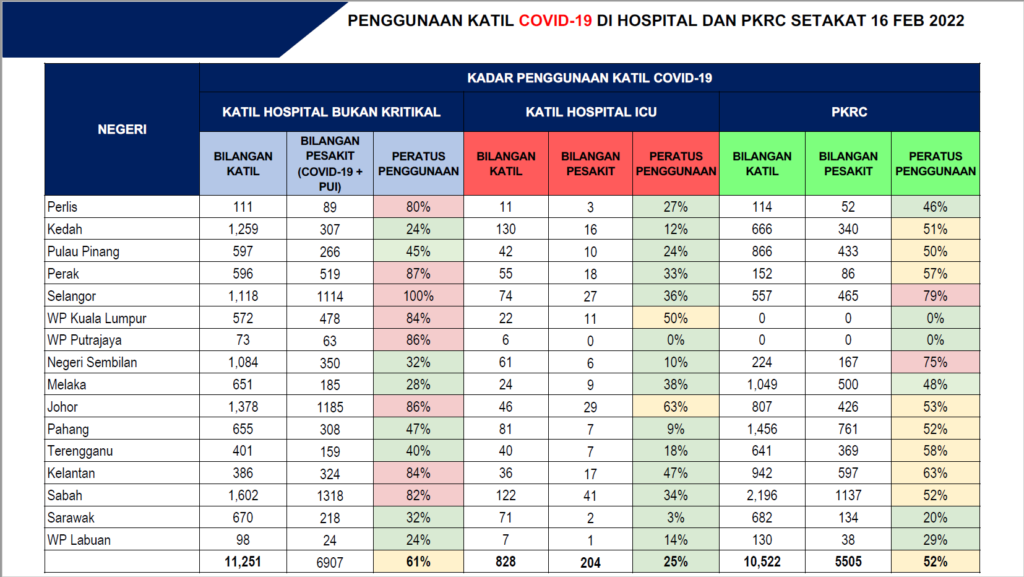KUALA LUMPUR, Feb 17 – Patients with mild Covid-19 symptoms who are at high risk of developing severe illness due to age, underlying medical conditions, or poor self-monitoring conditions at home, will now be hospitalised for the coronavirus to prevent deaths.
Health Minister Khairy Jamaluddin announced today that these high-risk Category One and Two cases are being admitted into hospitals as a “preemptive measure” to minimise the risk of developing more severe symptoms and deaths among vulnerable patients.
These patients include individuals who are immunocompromised, such as HIV patients receiving chemotherapy treatment; paediatric, gaeriatric, and obstetric patients requiring close monitoring; children without any guardians, have prolonged fever, or have underlying chronic illness; patients who were admitted via the emergency department; and those who have poor quarantine conditions at home.
“Although when tested initially, most cases are in Categories One and Two, some cases can decline to a more severe category in the following few days that require admission to a Covid-19 Quarantine and Low Risk Treatment Centres (PKRC) or hospital,” Khairy said at a press conference in Putrajaya.
As a result, Ministry of Health (MOH) data in the past week reported a 42 per cent increase in Covid admissions against a 109 per cent rise in Covid infections, according to Khairy.
MOH statistics on daily Covid hospital admissions from February 10 to February 16 show that 5,233 or 65.8 per cent of 7,951 patients admitted for Covid during the period were Categories One and Two cases. The remaining 2,718 cases (34.2 per cent) were Categories Three, Four, and Five cases.
On February 16, when Malaysia hit a record-high 27,831 Covid cases, a total of 1,269 cases were hospitalised, of which 841 cases (66.3 per cent) were in Categories One and Two, and 428 cases (33.7 per cent) were in Categories Three, Four, and Five.
Khairy said data from January indicated that the percentage of Categories One and Two cases that deteriorated to Category Three were 1.2 per cent, while those who worsened to Categories Four and Five were 0.6 per cent.
By vaccination status, Khairy said 75 cases (77.5 per cent) of new Covid infections in Categories Three, Four, and Five that were reported on Wednesday (February 16) were either unvaccinated, not fully vaccinated, or have yet to receive their booster dose.
Five cases (8.9 per cent) involved pregnant mothers, 39 cases (40.2 per cent) were individuals aged 60 and above, 31 cases (63.3 per cent) had comorbidities, and six cases (6.2 per cent) were among those who had died.

Malaysia’s bed occupancy rate for non-critical Covid cases at public hospitals, as of February 16, remained at a moderate level of 61 per cent nationwide. However, eight states and federal territories had a high occupancy rate of 80 per cent and above, including full occupancy (100 per cent) in Selangor.
The national bed occupancy rate at PKRCs continues to be manageable at just over 50 per cent, although Selangor and Negeri Sembilan recorded a utilisation rate of 79 per cent and 75 per cent respectively.
Malaysia’s intensive care unit (ICU) metric is still low at 25 per cent, as most states are still below the 50 per cent marker. Johor, however, has the highest ICU utilisation rate at 63 per cent and Kuala Lumpur at 50 per cent.








